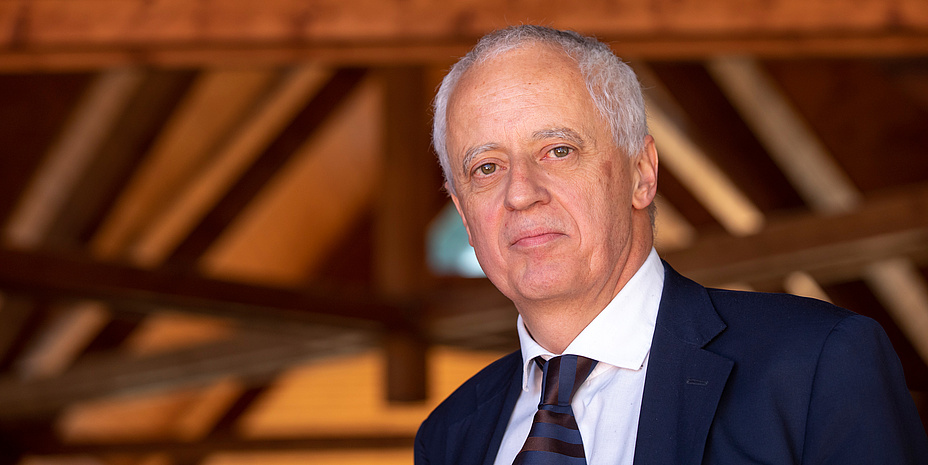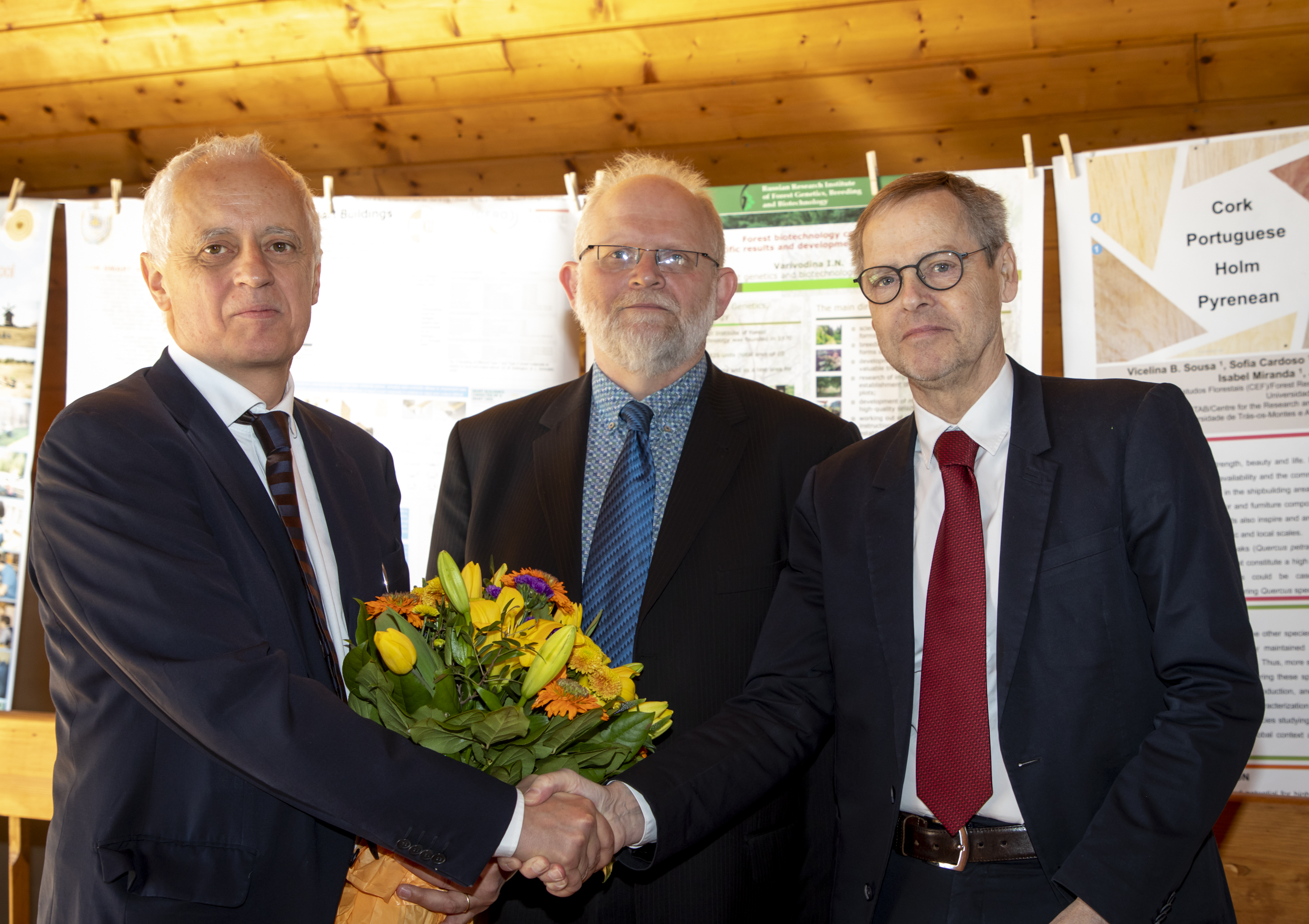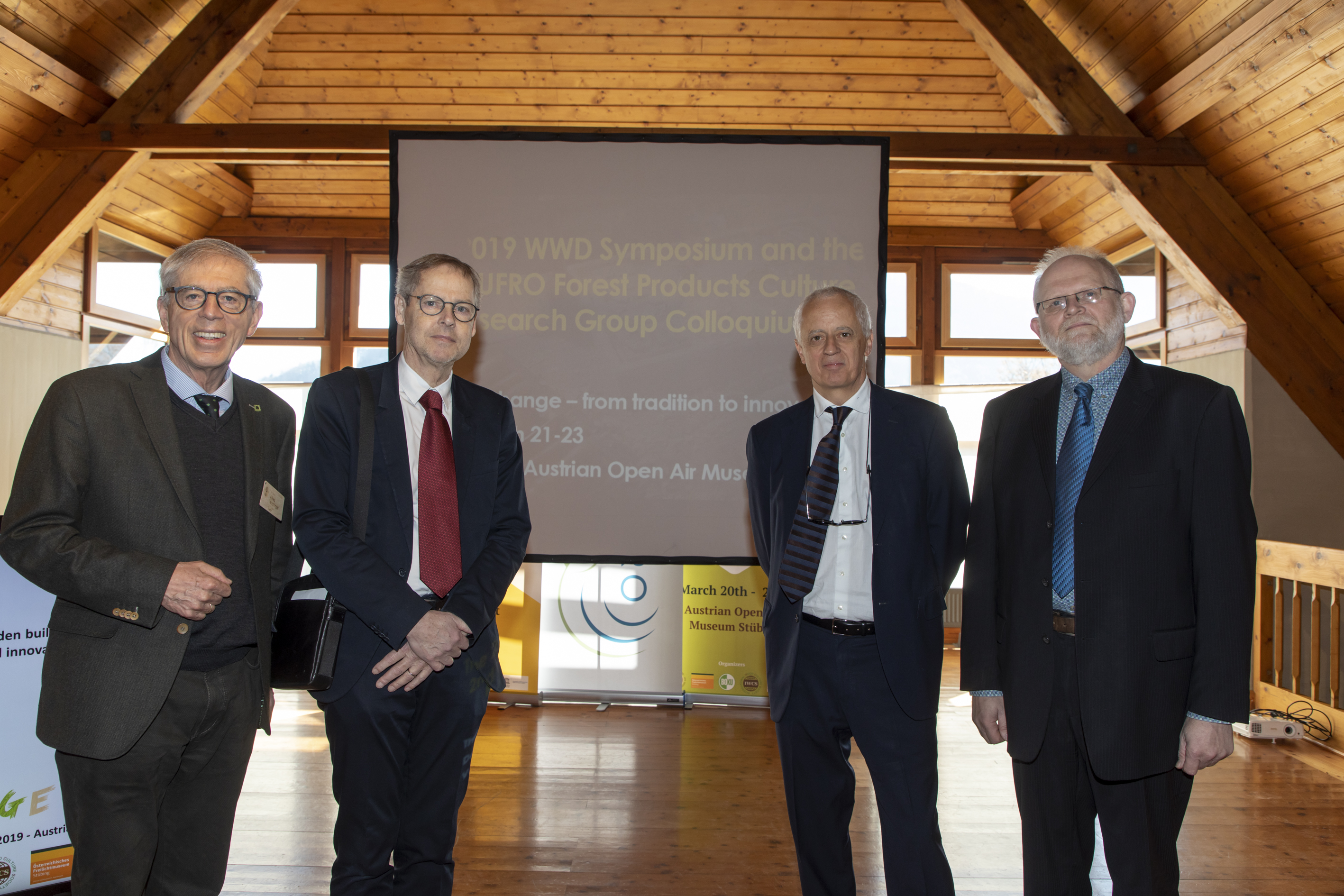TU Graz researcher Gerhard Schickhofer awarded prestigious Marcus Wallenberg Prize

If there is one technology in particular behind the worldwide spread of multi-story wooden buildings, then it is cross-laminated timber (CLT). And it was a Styrian scientist, Gerhard Schickhofer, who was the prime mover behind the development of this stable and eco-friendly material. Schickhofer has been recognised for his research achievements and knowledge transfer in relation to CLT with the lucrative and highly regarded 2019 Marcus Wallenberg Prize. The prize offered by the eponymous Swedish foundation is a recognition for ground-breaking scientific achievements substantially contributing to the expansion of knowledge and technological development in areas of importance to forestry and forest industries.
The award was announced at the World Wood Day on 22nd March at Stübing Open-Air Museum near Graz by Kaj Rosén, Executive Secretary of the Swedish Marcus Wallenberg Foundation. Gerhard Schickhofer will receive the prize in Stockholm in the autumn. King Carl XVI. Gustaf of Sweden will personally hand over the prize to Gerhard Schickhofer in an official ceremony.
Honoured for ground-breaking research on cross-laminated timber
The selection committee of the Marcus Wallenberg Foundation justified their decision to award the prize to Gerhard Schickhofer on the basis of the Graz researcher’s principal scientific and technological contribution to standardising the development of CLT and paving the way for its use as a building material. The successful implementation of scientific findings in practice and their practical orientation were unequalled, as were various relevant publications of Schickhofer, which have substantially shaped the specialist field. ‘Gerhard Schickhofer’s passion and commitment for the specialist area of CLT have played a key role in improving the profile of timber for building solid and tall structures. His work has been tremendously important for architects and designers to interpret the technological possibilities of CLT,’ says professor Johanna Buchert, president of the selection committee of the Marcus Wallenberg Prize.
A strong, stable and eco-friendly building material aims high
Cross-laminated timber or CLT is a building material that was developed some 25 years ago under the auspices of TU Graz’s Institute of Timber Engineering and Wood Technology and the Graz competence centre ‘holz.bau forschungs gmbh’. Gerhard Schickhofer and his team have played a leading role in establishing European standards and technical approvals for CLT production and the use of timber engineering in industrial applications.
CLT consists of a number of solid wood boards of up to 20 metres long and four metres wide which are glued together crosswise. It is extremely stable and resistant against earthquakes, and easy to process using modern manufacturing technologies, to shape and even to bend. All these properties have made it possible to build skyscrapers out of wood – for instance, the 24-floor HoHo Vienna, a residential, office and business building with completion scheduled for June 2019, or the 80-storey River Beech Tower in Chicago, USA. Like solid wood, cross-laminated timber is a sustainably produced, renewable and thus extremely environmentally friendly building material.
Biographical sketch of the laureate
Gerhard Schickhofer was born in Vorau, Styria, in 1962. He studied civil engineering at TU Graz and wrote his doctoral thesis there in 1994 on ‘Starrer und nachgiebiger Verbund bei geschichteten flächenhaften Holzstrukturen’. Gerhard Schickhofer has been head of TU Graz’s Institute of Timber Engineering and Wood Technology since 2004. Schickhofer has won many prizes for his research, among which number the Umdasch Prize, which he was awarded in 1995 and 1997, the Austrian Research Promotion Agency Prize 1998 for his contribution to the first Austrian statutory approval of CLT, and the Styrian Timber Engineering Prize 2000. Thanks to his work, the first national guideline for so-called CLT solid timber construction was published in 2002, which led to acceptance of the technical elements in multi-storey buildings. Gerhard Schickhofer is a co-founder of holz.bau.forschungs.gmbh with its headquarters at TU Graz’s Structural Engineering Centre.
Kontakt
Marcus Wallenberg Foundation
Professor Kaj ROSÉN
Executive Secretary
Tel +46 70 6697088
kaj.rosen@mwp.org
TU Graz
Barbara GIGLER, press officer
Tel.: +43 316 873 6006
Mobil: +43 664 60873 6006
barbara.gigler@tugraz.at





